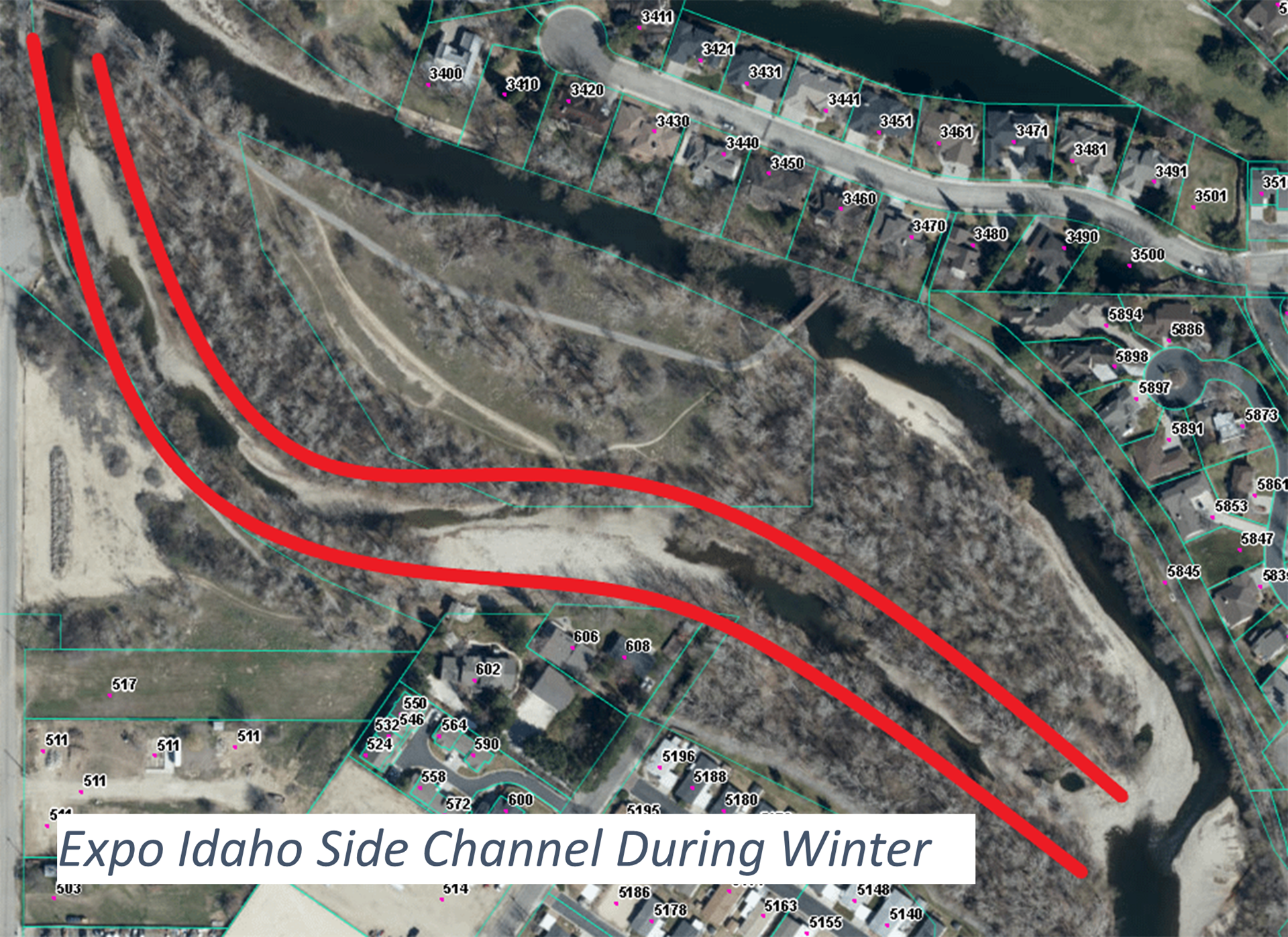Side channel habitat is one of the most important factors for a healthy wild trout population. They provide good spawning habitat for adult trout and more importantly good rearing habitat for young trout—the reduced flows in the side channel are much easier for the young trout to handle than the main river and the side channel’s extra bankside woody-cover gives young trout a place to hide from birds and other predators. Side channels that flow year-round are the most important because they provide shelter during the winter which is critical for young trout to survive into adulthood.
The Boise River through town is an urban tailwater river which over time has reduced its side channel habitat and has become a limiting factor for wild trout reproduction. Idaho Fish and Game does trout fry surveys in the Fall that show the Boise River has a healthy population of wild rainbow and brown trout. And their surveys show that trout fry populations are 7-10 times higher in the side channels than the main river. Unfortunately, there are very few side channels on the Boise River that flow in the winter.
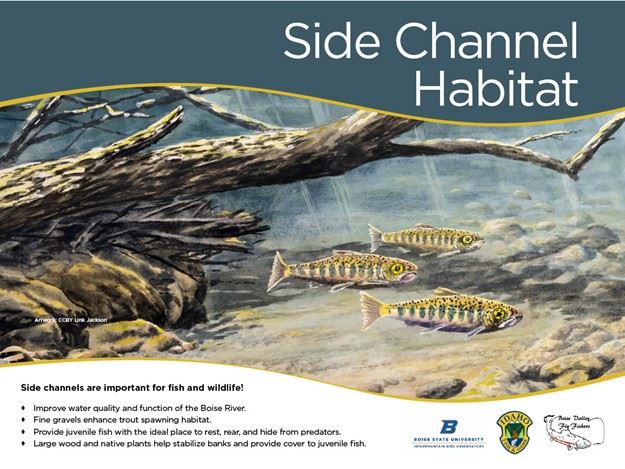
A SUCCESSFUL SIDE CHANNEL RESTORATION
Two years ago the Intermountain Bird Observatory led a Boise River side channel restoration project at the Diane Moore Nature Center, which is located a couple of miles downstream of Lucky Peak Dam—above Barber Dam. The side channel was engineered to provide good habitat for fish and wildlife including plenty of woody cover for small fish to seek shelter.
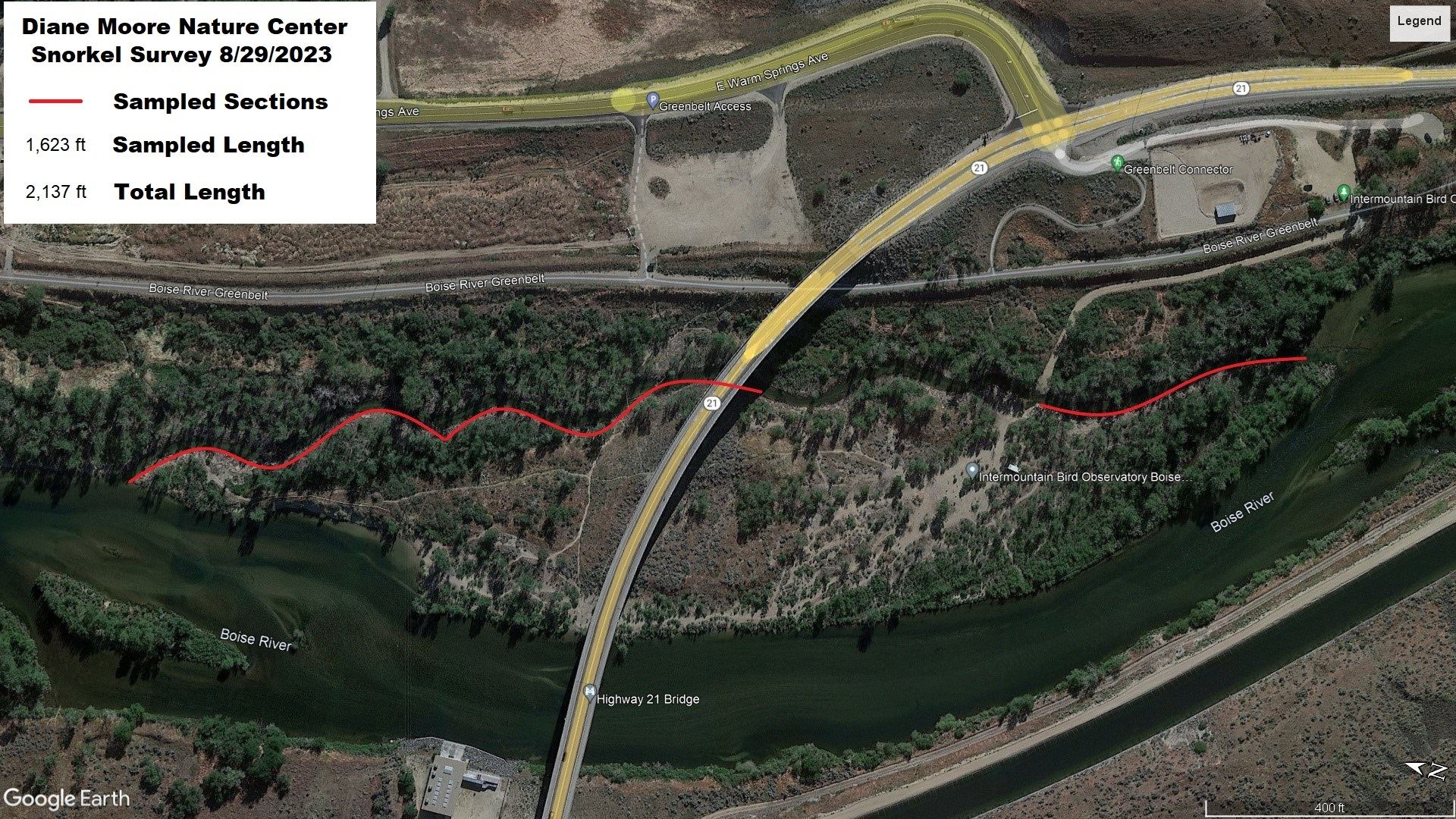
BVFF got involved in the Diane Moore Nature Center side channel project in 2022 and helped design and install Trout Habitat signs along the side channel, followed by building an Angler Access at the site. BVFF has been thrilled to be involved in this project because it supports all three of our mission goals: Fly Fishing Conservation, Access, and Education.
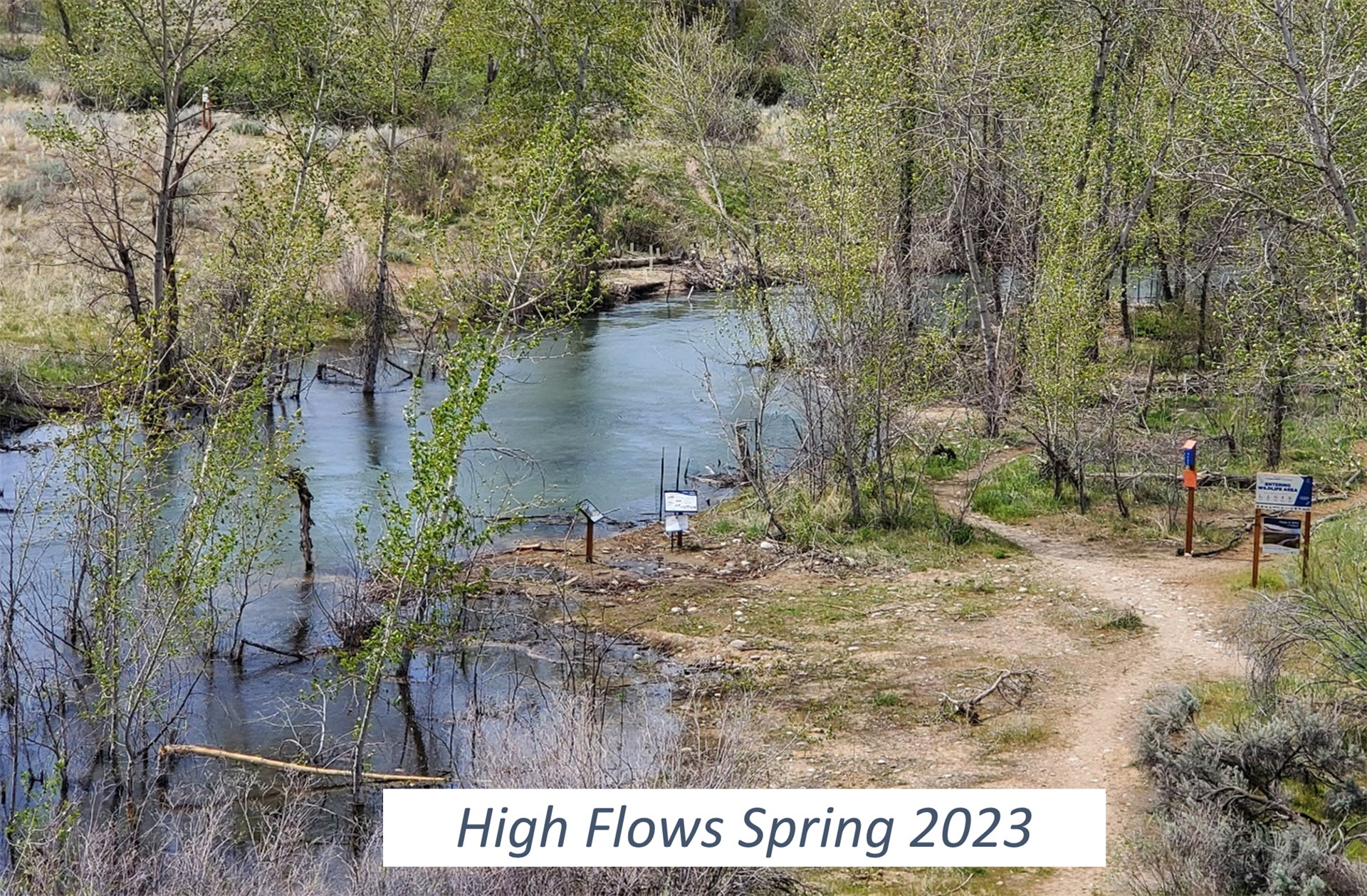
The first spring the side channel had water (2022) there was limited trout spawning observed, likely because Boise River flows came up late. And in the second season (2023) we had high spring flows making it impossible to see if trout were spawning there. This summer while walking the side channel we saw small “minnow-sized” fish but were not able to identify them. So, we decided to stick our heads underwater to see what we would find! Our goal was to see how trout are using the new side channel and get an idea on numbers and distribution.

A snorkel survey is a standard way to count trout fry. We talked with Tracy Hillman, Senior Ecologist at BioAnalysts who specializes in trout habitat restoration, and he talked us through the process and gave us a great document on how to do a snorkel survey. August 29th, volunteers from Boise Valley Fly Fishers (Troy Pearse, Klaus Kissman and Dennis Moore) did a fry snorkel survey in the new side channel at the Diane Moore Nature Center. Even though it was summer, we wriggled into wetsuits to protect us from the extended cold-water exposure and debris in the water. We started at the bottom and had 2 people snorkel upstream side-by-side counting the fish they saw. This was our first snorkel survey and we didn’t know what to expect, but we were flabbergasted when we went underwater and started seeing rainbow trout fry everywhere! The side channel is about 0.4 miles long and we snorkeled sections from the bottom to the top—covering about 3/4 of the total length—counting over 2,000 trout fry which were evenly distributed throughout the side channel!
A large part of the success of this side channel is the extra effort made to add woody-cover: There are numerous downed trees and log-piles in the side channel which give the trout fry a good place to seek shelter. Observing the trout fry underwater was a great way to see this as many of the fry were tucked under pieces of wood in the water with some large pods of trout fry by logjams.
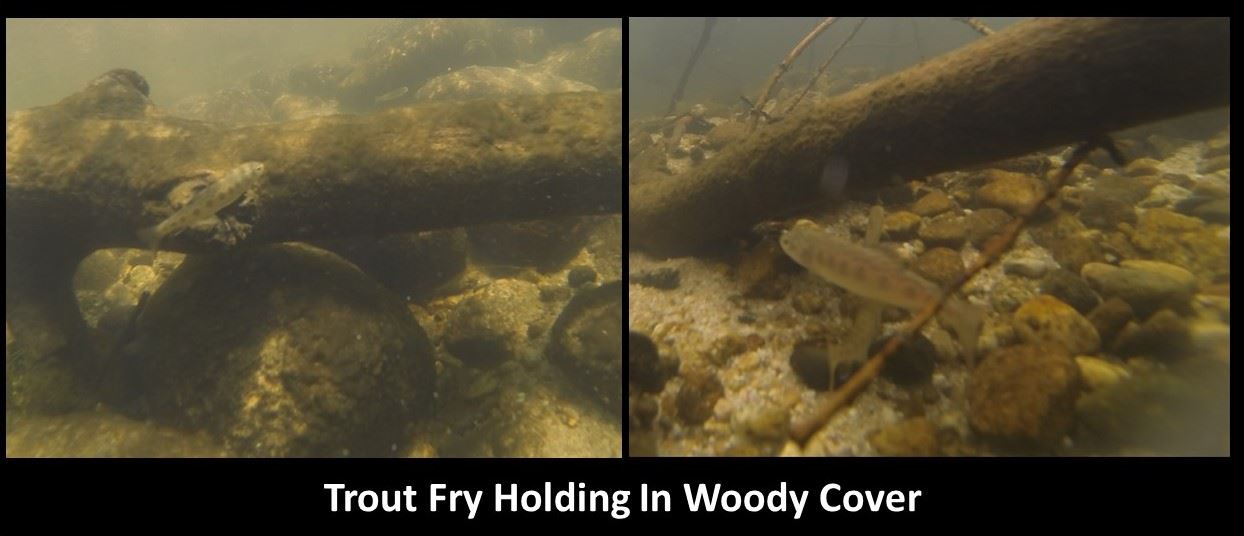
The vast majority of trout in this stretch of water are wild, as Idaho Fish and Game does not actively stock this section of river. We are excited about the potential of the side channel to increase the population of wild rainbow trout in this section of the Boise River, which is isolated between two dams: Barber Dam below and the New York Canal Diversion Dam above.
The side channel has restricted inflows in the winter but talking with Greg Kalteneker (who lead the side channel project), the side channel was designed to connect with groundwater and last winter the water station installed on the side channel showed it flowed at 1cfs - 3cfs. Hopefully that will be enough inflow to keep it from freezing. We plan to check it a few times this winter to see how it is flowing and if it is icing over.

IDFG Historical Fish Stocking Records
A SIDE CHANNEL OPPORTUNITY
As good as the trout population is on the Boise River, it is not reaching its full potential. One of the best things we can do for the Boise River wild trout population is increase the number of side channels that have year-round flow for trout spawning and rearing. BVFF is working with Idaho Fish and Game to restore winter flows to two side channels behind Expo Idaho that were cut-off from winter flows after Snowmageddon in 2017. Idaho Fish and Game will be on-site at these side channels this Fall when Boise Rivers flows drop. They will be documenting the side channel dewatering and evaluating possible trout-fry stranding, including possibly rescuing stranded trout fry and moving them to the main river. BVFF is volunteering to assist them. Stay tuned for more details and sign up if you are interested. The current estimate for flow-reductions on the Boise river is the morning of Monday October 15th, but that time could change.
UPDATE 10/5/2023: The Boise River dropped earlier than expected. IDFG sampled the side channels and identified several pools with stranded trout fry and thousands of minnows. They electrofished a couple of pools and rescued several dozen trout fry. We will help them monitor the pools over the winter to see if they ice-over and IDFG may electrofish them in the spring to evaluate overwinter survival.
